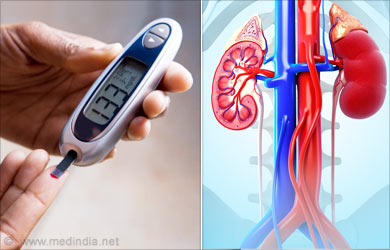- Vancomycin-Resistant Enterococci - (http://www.medicinenet.com/vancomycin-resistant_enterococci_vre/page8.htm)
- What is VRE? - (http://www.webmd.com/skin-problems-and-treatments/tc/vancomycin-resistant-enterococci-vre-overview?page=2)
About
Enterococci are a group of round-shaped gram-negative bacteria that inhabit the gut but which are also capable of infecting other parts of the body. It is capable of colonizing human body for several days and causes harm only when it enters the blood stream. In the past the drug vancomycin was liberally used to effectively treat enterococcal infections.
Vancomycin- resistant enterococci (VRE) are bacteria that are resistant to the antibiotic vancomycin. It is formed when it acquires a new piece of DNA called a ‘plasmid’ that permits the bacteria to become resistant to vancomycin. Of these, vancomycin-resistant Enterococcus faecium and vancomycin-resistant Enterococcus faecalis are the most important ones. These VRE are usually resistant to more than one antibiotic and are potentially capable of transferring vancomycin resistance to unrelated bacteria, such as MRSA (methicillin-resistant Staphylococcus aureus). These transformed strains are renamed VRSA.

It is a matter of concern that 30% of all enterococcal infections are caused by VRE. These infections are contagious and spread through contact and are, therefore, causing great concern in health-care set-ups. However, it is not transmitted through sneezing or coughing. At present there are very few antibiotics that are capable of treating these infections but research is being done on developing several more.
Causes and Risk Factors
VRE is capable of existing in the human bowel without causing any harm. When their number increases, they enter the blood stream or other parts of the body with the help of proteolyting substances that they produce. They are capable of causing complications through many types of infections such as bloodstream infection (sepsis), abscess, wounds, urinary infection, infections of the heart and brain or pneumonia.
The following are the risk factors for VRE infection –
- Those with chronic illnesses, such as diabetes / kidney failure

- People who are immune compromised
- People who have cancer
- People living with catheters or IUD
- Prior use of vancomycin
- Long period of hospitalization
The symptoms of VRE infection varies in accordance to the site of infection.
Sepsis:
- Fever
- Fatigue
- Accelerated heart beat
Urinary infections:
- Burning sensation during urination
- Fever
- Back pain
Meningitis:
- Headache
- Stiff neck
- Confusion
Infection of heart valve (endocarditis):
- Damages the heart valve causing leak or failure
Pneumonia:
- Fever
- Breathing difficulty
- Cough

Diagnosis requires culturing the organism. VRE can be easily cultured in a laboratory. A swab from samples of the blood, spinal fluid, sputum or infectious tissue is taken and cultured in a petridish using the right medium. In case of pneumonia or other infections, imaging studies may be carried out.
Although VRE are resistant to a wide range of antibiotics there are newer, more effective ones being developed.Some of the current drugs include combinations of teicoplanin (Teichomycin) and amoxicillin or a combination of ampicillin imipenem, and vancomycin (Vancocin). Linezolid, daptomycin, teicoplanin and tigecycline are also used.

Certain steps can bring about faster healing. They include draining the pus from abscesses and removal of intravenous lines and catheters. Most cases of VRE infections can be cured. The duration of the disease depends of the affected site.
It is also possible to prevent VRE infections by meticulously following the guidelines for health practices in health-care facilities and homes. Washing hands after using bathrooms, use of alcohol- based disinfectants, avoiding contact with affected person, minimal use of catheters and changing or properly disposing sheets used by affected persons are some of the steps that can help to minimize the spread of VRE infections.







